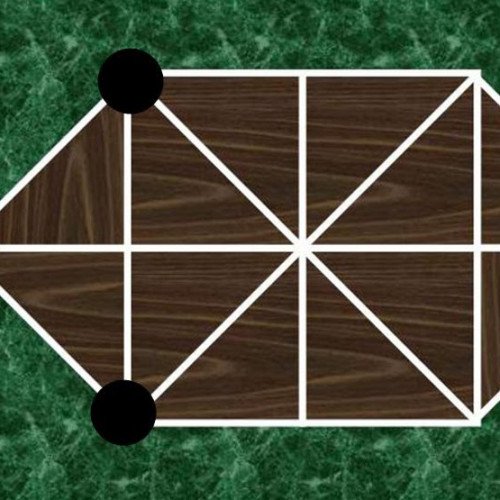CHATURANGA VS HARE AND HOUNDS

CHATURANGA
Chaturanga (Sanskrit: चतुरङ्ग; caturaṅga), or catur for short, which means 'Four Divisions' (referring to ancient army divisions of infantry Pawn (chess), cavalry Knight (chess), elephantry Alfil (chess), and chariotry Rook (chess)), is an ancient Indian strategy game that is commonly theorized to be the common ancestor of the board games chess, xiangqi, shogi, sittuyin, and makruk. Chaturanga is first known from the Gupta Empire in India around the 6th century AD. In the 7th century, it was adopted as chatrang (shatranj) in Sassanid Persia, which in turn was the form of chess brought to late-medieval Europe. According to Stewart Culin, chaturanga was first described in the Hindu text Bhavishya Purana. The exact rules of chaturanga are unknown. Chess historians suppose that the game had similar rules to those of its successor, shatranj. In particular, there is uncertainty as to the moves of the Gaja (elephant). The origin of chaturanga has been a puzzle for centuries. It has its origins in the Gupta Empire, with the earliest clear reference dating from the sixth century of the common era, and from north India. The first substantial argument that chaturanga is much older than this is the fact that the chariot is the most powerful piece on the board, although chariots appear to have been obsolete in warfare for at least five or six centuries. The counter-argument is that they remained prominent in literature. Several more recent scholars have proposed a gradual evolution in the centuries B.C. in the northern or northwestern border areas of Indian culture, where it was in contact with Greek culture brought by the Macedonian-Greek army, and where some rulers issued coins with fused Greek-Indian imagery. Myron Samsin argues that chaturanga originated in the kingdom of Bactria, ca. 255–55 B.C., in a fusion of the many short-moving men of the Greek game petteia, or poleis, with men derived from the various moves of an Indian race game, perhaps Seega or Chaupur, on the ashtapada, the board of another race game.
Statistics for this Xoptio

HARE AND HOUNDS
Hare games are two-player abstract strategy board games that were popular in medieval northern Europe up until the 19th century. In this game, a hare is trying to get past three dogs who are trying to surround it and trap it. The three dogs are represented by three pieces which normally start on one end of the board, and the hare is represented by one piece that usually starts in the middle of the board or is dropped on any vacant point in the beginning of the game. Hare games are similar to Bear games and hunt games. One side has more pieces than the other with the larger side attempting to hem in the smaller side. The smaller side though is usually compensated with more powers. Where Hare games differ is that the hounds can only move forward or sideways, and not backwards. The hunters in the Bear games can move in all directions. Furthermore, the dog in the Hare games cannot capture any of the hares, unlike the tigers, leopards, jaguars, and foxes in the hunt games which can capture their respective prey counterparts. There are several different Hare game boards depending upon the country of origin. Many preferred the narrow double-ended spearhead-like boards with orthogonal and diagonal lines running through them. There were several variations on this design. However, one in Denmark used a round board, and another design is found in Latvia. Hare games are referred to by different names. In 19th century France, a hare game that was popular among the military was called The Soldiers' Game. The dog is sometimes referred to as a hound, and hence the alternative title to this game as Hare and hounds. Other names are French Military Game, Game of Dwarfs, The Devil among tailors, and Trevolpa or Volpalejden . As the rules of the game are simple to program, there are many electronic implementations of the game. The second link below allows you to play this game. In this computer game, the hares and hounds are reversed. Instead, it is the hounds attempting to surround and immobilize the hare.